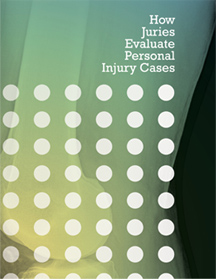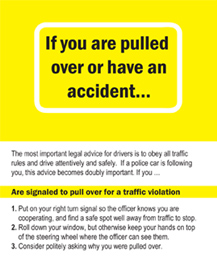Elements of proof
In a car accident lawsuit, there are typical things that both your personal injury lawyer and the defendant’s lawyer have to prove. For example, your lawyer must prove that the defendant was negligent. This can be sub-divided into more specific elements, such as that the defendant was driving and that the defendant failed to use care while driving.
Similarly, your personal injury lawyer must prove that you were injured. This can be separated into proving doctor bills (medical special damages) and proving pain and suffering, and these claims can be broken down into more specific elements.
Furthermore, once the various elements for the lawsuit are identified, it is helpful for the lawyer to identify the evidence that is relevant to each element (tending either to prove or disprove the element).
The following charts show some of the things that typically arise in car accident lawsuits as well as some of the claims or defenses that each party must prove, the elements of those claims or defenses, and some sample hypothetical evidence that might be relevant to those elements.
Plaintiff’s claim that the defendant was negligent
| Claim | Elements | Evidence Proving / Disproving |
|---|---|---|
| Defendant negligently operated a car. | 1. Defendant was driving. | Defendant admitted this in his deposition. |
| 2. Defendant failed to use ordinary care, and thus created an unreasonable risk of injury. | A witness will testify that he saw excessive speed. However, in his answers to interrogatories the defendant said that his cruise control was set at 15 m.p.h.
The police officer found no evidence of braking, such as skid marks. However, a witness told the officer that he heard squealing tires. In his answers to interrogatories the defendant said that he was not wearing prescription glasses. |
Defendant’s claim that the plaintiff was negligent
| Defense | Elements | Evidence Proving / Disproving |
|---|---|---|
| Contributory negligence. | 1. Plaintiff failed to exercise ordinary care in a way that contributed to the car accident. | The police officer will say that the plaintiff should have seen the defendant approach from 100 yards. However, a witness will testify that the defendant was traveling at excessive speed.
The plaintiff was going to the body shop to have his brakes tested. However, the plaintiff will say that he never had time to brake because the defendant was driving too fast. |
| 2. Plaintiff failed to use ordinary care for own safety in a way that contributed to his injuries. | Plaintiff admitted he was not wearing a seatbelt. However, the defendant has not named a biomechanical expert who could testify about enhanced injuries. |
Plaintiff’s claim of medical damages as a result of the car accident
| Claim | Elements | Evidence Proving / Disproving |
|---|---|---|
| Medical Specials. | 1. The medical bills were for reasonable treatment for the Plaintiff. | Plaintiff’s doctor will testify about the proper standard. However, a doctor for the defense will testify that chiropractic treatment was excessive. |
| 2. The injuries were a result of the accident. | A biomechanical engineer will testify that an accident at that speed could cause injuries.
The plaintiff will testify that he never had the pain before the accident. |
Plaintiff’s claim of pain and suffering as a result of the car accident
| Claim | Elements | Evidence Proving / Disproving |
|---|---|---|
| Pain and suffering. | 1. Pain/suffering. | A paramedic will testify that the plaintiff was screaming in pain at the scene.
A co-worker of the plaintiff will testify that the plaintiff can no longer sit for 30 minutes without making faces. Medical records show that the plaintiff never even took Tylenol before, but now takes pain medications every day. |
| 2. Physical impairment. | — | |
| 3. Humiliation and anxiety. | Proof is difficult because medical records indicate that the plaintiff had no concerns, and his spouse says that their marriage has never been better. |
Defendant’s claim that the plaintiff failed to mitigate his damages
| Defenses | Elements | Evidence Proving / Disproving |
|---|---|---|
| Failure to mitigate. | 1. Plaintiff failed to use ordinary care to obtain proper medical treatment. | There was a gap in all treatment for 30 days after initial ER treatment. However, the ER doctor had told the plaintiff that it would get better in time, and the plaintiff had no money to pay for treatment. |
| 2. Plaintiff failed to use ordinary care to follow home exercise program. | Physical therapy records suggest that the plaintiff did not know how to do the exercises on return visits. However, the plaintiff says that he did the exercises religiously. |
Defendant’s claim that the plaintiff already had these injuries
| Defenses | Elements | Evidence Proving / Disproving |
|---|---|---|
| Pre-existing condition. | 1. Plaintiff had prior low back condition. | The plaintiff’s doctor will testify that the only treatment to plaintiff’s low back was 10 years prior to the accident, and that he had no condition to his low back on the date of the accident. However, a doctor for the defense will testify that the plaintiff has a pars defect, and that is the real cause of his current problems. |
| 2. Plaintiff’s current problems are the natural result of the prior problem. | Same as above. |



